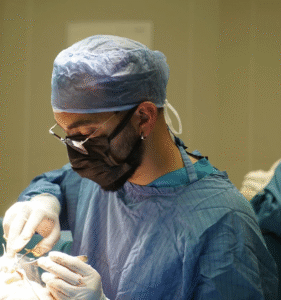Types of Breast Implants for Mammoplasty
Breast augmentation is one of the most popular surgeries in the world, because only some women are happy with their shapes. Before you get breast implants, you need to know something about mammoplasty, the intricacies of the surgery, and breast implants.
What are they filled with?
Surgeons use implants for breasts of different sizes and shapes. The result depends on the right choice. The times when implants were standard circles filled with liquid are long gone. Breast implants consist of a filler and a shell. The content determines durability, the need for replacement in the future. The shell is “responsible” for the “hermetic” content of the gel or solution. Let’s consider each type of breast filler “under the microscope”.
Silicone
Silicone is a popular filler for implants. The first and second generation options quickly broke. Silicone poured out and soaked the tissue, the prosthesis lasted for several years. Third generation fillers showed greater “wear resistance”, the shell became even stronger, and the gel thicker. Currently, fourth and fifth generation breast implants are in demand. In the first option, a small amount of gel spillage is noted, but the percentage of endoprosthesis rupture is minimal. Fifth generation implants are filled with a cohesive gel substance, viscous in structure. The filler is able to form a beautiful and natural breast contour. It is practically incapable of wrinkling, and when ruptured, the contents do not spill. Silicone endoprostheses do not shift and do not cause complications.
Pros of silicone breast implants:
- restore shape after compression;
- natural in appearance and touch;
- practically incapable of causing allergies or tissue scarring.
Cons:
- relatively high cost;
- postoperative scar is larger and more noticeable, compared to a saline implant;
- no external signs of shell rupture, therefore magnetic resonance imaging is indicated twice a year.
There is no ideal breast implant. What is beautiful and durable in one patient may “behave” differently in another. It is important to take a responsible approach to the procedure and consult with an experienced surgeon.
Saline
Saline implants are among the first implants that appeared in the work of plastic surgeons. They are a strong shell filled with saline. Even if they rupture, they will not cause harm to the body. Most clinics do not use this type of prosthetics, since it is considered outdated. But in some situations, saline implants are the best option.

Advantages:
- Low cost compared to analogues;
- Minimal incision, since there is the possibility of filling after implantation;
- Saline solution does not have a negative effect on organs and tissues.
Cons:
- High risk of damage. Not only grass but also chest movements during breathing cause wear;
- In case of rupture, a second operation is required; Sounds similar to “gurgling” may be heard during running;
- The weight of the saline solution leads to sagging and deformation of the mammary glands.
Disadvantages have significantly reduced the popularity of saline-based fillers.
Hydrogel
- hypoallergenic, do not cause rejection or inflammation;
- do not damage tissue even in case of leakage or rupture of the contents – the substance disintegrates into carbon dioxide, water, glucose;
- hydrogel-based implants will not interfere with mammography.
Surface types
If we consider the types of implants for mammoplasty taking into account the surface of the shell, they are divided into 2 main groups:
- Smooth.
- Rough.
The first ones are softer, pleasant to the touch, but more often lead to the growth of rough scar tissue beyond the implant (capsular contracture). In addition, such prostheses are more susceptible to changing position inside the body. Many plastic surgeons choose breast prostheses with a rough and slightly porous structure. They are practically not prone to movement and the occurrence of capsular contracture. They are also not without drawbacks, for example, the skin wrinkles and gathers into small folds.
Sizes and shapes of implants
The size is determined by the volume of filler. Manufacturers have their own “size grids”. Surgeons adopt the following formula – 150 grams of filler increases a woman’s bust by one size.

ВIt is important to pay attention to the width of the implant base, since both too narrow and too wide options will make the breasts look unnatural. When choosing a shape, plastic surgeons take into account:
- the patient’s wishes, her figure, height, other anatomical parameters;
- the shape and natural size of the breast, the width of the chest;
- the elasticity of the skin.
If for individual reasons it is not possible to install large implants in one operation, the intervention is carried out in several stages. Small-sized prostheses are used, and when the skin stretches, the size you like is selected. As for the shape, I use two options:
- Rounded.
- Teardrop-shaped.
Teardrop implants are shaped like a drop. Due to their natural shape, they are called anatomical. The lower part is more voluminous and smoothly turns into a thicker part at the top. They are suitable for women with a small bust by nature and a narrow chest. Teardrop prostheses cost more than round ones.
Selecting implants for mammoplasty
Women who have decided to enlarge or correct their mammary glands with implants face a difficult choice, because all prostheses are different. There is no universal and clear recipe. It is important to consider the body type, the shape of the chest, the natural proportions of the breast and find “your” experienced surgeon. The final decision on the shape and size of the implants is made by the patient of Globalmedik together with his doctor during a consultation before the operation. This allows you to make the most correct and safe choice to get the ideal result.






